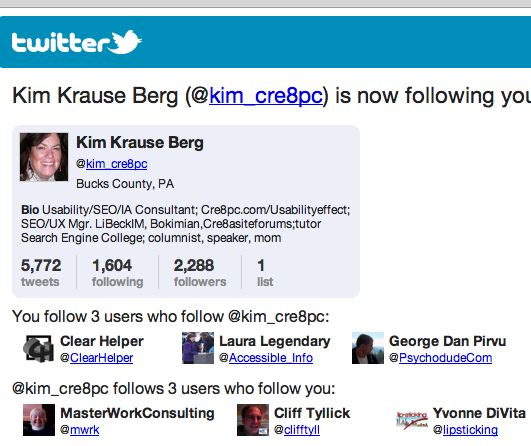One of my favorite responses when asked about Twitter is, “You don’t get it until you get it.”
What I mean is that hearing about Twitter makes people scoff and dismiss it. Seeing the public timeline makes people say things about wasting time and having better things to do. I was one of the scoffers at first.
Then I got it.
The reasons I got it are years in the past. I suspect that some new people are getting it in the last few days because of events in Egypt. It’s hard to ignore how significant even 140 characters of open communication can be when freedom and self-determination are at stake.
Those of you who are fans of Gray’s Anatomy saw the Chief get it last night. Dr. Bailey was tweeting from the operating room, and the Chief didn’t like it.
Until he did.
It was a classic conversion to getting Twitter.
If you didn’t see it last night, watch it free on ABC. If you ever need an example of why people think Twitter is important, this episode of Gray’s Anatomy is a perfect teaching tool. There’s a short clip about Dr. Bailey tweeting, but it doesn’t go on long enough for you to see the Chief finally seeing the value of social media. If you run across a clip that goes on for another minute or so past what this clip shows, please share a link to it in the comments.


